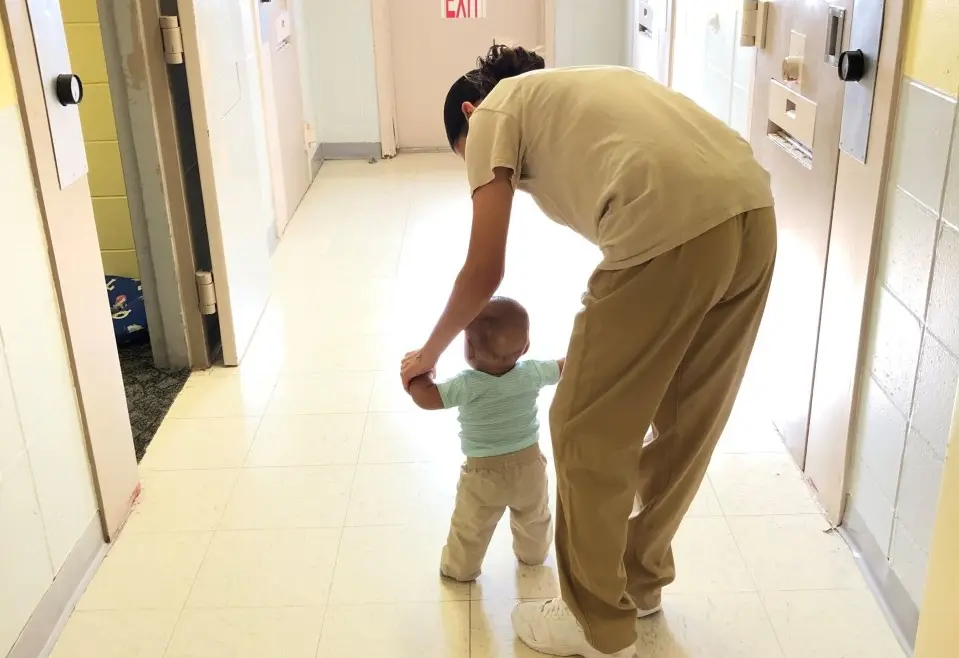Wee Ones in Prison
- Lin Ferguson
- Oct 25, 2023
- 3 min read
The Prison Housing Infants with Their Mothers

Photograph: IDOC
Initially, most people will have reservations when it comes to not only giving birth in prison, but also caring for a child housed within a facility. I must admit that upon first learning about nurseries housed within penitentiaries, like the Wee Ones Nursery (later renamed Officer Breann Leath Memorial Maternal & Child Health Unit in honour of fallen officer, Breann Leath) within the Indiana Women’s Prison, I was taken aback as my gut reaction leads me to believe a prison is the last place a child needs to not only be, but live. The conditions within these institutions, and even the tensions that arise that could affect the child, seem enough to consider it a bad idea. However, when considering that recent data shows that 131% of children with an incarcerated parent have mothers versus fathers (80%) imprisoned (Glaze & Maruschak, 2010), and the fact that mothers most often are the financial and emotional stability for these dependents, (e.g., Bloom & Steinhart, 1993; Boudin, 2011; Celinska & Siegel, 2010; A. Ferrell, 1998; Greenberg, 2007; Henriques, 1996; Owen, 1998; J. M. Pollock, 2012; Sharp, 1999; Sharp & Marcus-Mendoza, 2001), along with the well documented effects of parental incarceration on children, it proves to be the better option.
In the case of Brenda Singer, a woman incarcerated for opioid possession and a failure to show for a work-release program, nurseries like Officer Breann Leath Memorial Maternal & Child Health Unit Can be game changers as they allow for bonds to be made with infant children they would otherwise have taken from them due to their incarceration. Singer Was nine months pregnant when last arrested and sent to the Indiana women’s prison, and of course gave birth while imprisoned. Where usually a child will be removed from this setting swiftly after birth, due to provisions of nurseries, childcare, parenting & rehabilitative programs, and much more offered by entities like Officer Breann Leath Memorial Maternal & Child Health Unit, Singer was allowed to raise her child and be with her throughout her two year or less stint within the prison. The importance of this critical bonding time between mother and child is stressed by Dr. Angela Tomlin as she asserts that the brains of infants are still developing and need social experiences, like relationships with their mothers, feelings of safety, and attachment—all things unavailable to most children of incarcerated women. A Columbia University study found that a larger number of ‘prison nursery babies’ have secure attachments. Another study found less anxiety & depression in these same children than in those without imprisoned mothers.
Though, not every mother will qualify for this type of program while incarcerated. Due to set prerequisites and qualifications, the program is only available to women mothers with shortest sentences that can be completed before the child ages to two years. What’s more, older children, like adolescents, who have mothers who are incarcerated are not able to live on prison campuses. Nevertheless, certain programs do exist to facilitate visitation and connection between mother and child, like the Indiana Woman’s Prison Family Preservation Program, which has playrooms and is a better fit for those who don’t qualify for the nurseries. This proves to be very beneficial as, not only do these mothers and those with longer sentences report experiencing the most strain according to Dr.’s Phyllis E. Berry’s and Helen M. Eigenberg’s Role Strain and Incarcerated Mothers, but most women cannot afford contact with their children while incarcerated, “(e.g., stamps, cards, tapes) (Z. K. Snyder, 2009, p. 46)” (Belknap, 2021 p. 171). This is especially needed because, “the societal expectation that mothers assume the role of primary caretakers places an extra pressure on mothers in choosing their options for treatment since treatment may impact their roles as mothers.” (S. Allen et al., 2010; Cooper-Sadlo, Mancini, Meyer, and Chou, 2019; Gilham, 2012; M. B. Mitchell & Davis, 2019).
Sources
Belknap, J. (2023). the Invisible Woman: Gender, Crime, and Justice (5th ed.). SAGE.
Bursten, D. (2020, April 16). Indiana Women’s Prison Wee Ones Program Renamed in Honor of Fallen L.M.P.D. Officer Breann Leath. Indiana Department of Corrections. https://www.gopopai.org/indiana-womens-prison-wee-ones-program-renamed-in-honor-of-fallen-impd-officer-breann-leath/
PBS News Hour. (2018). In One Indiana Prison, a Program Allows Incarcerated Moms to Raise Their Newborns. YouTube. Retrieved October 19, 2023, from https://www.youtube.com/watch?v=qP8xXOou8YY
Chou, J. L., Cooper‐Sadlo, S., Diamond, R. M., Muruthi, B. A., & Beeler‐Stinn, S. (2019). An Exploration of Mothers’ Successful Completion of Family‐Centered Residential Substance Use Treatment. Family Process, 59(3), 1113–1127. https://doi.org/10.1111/famp.12501




Comments